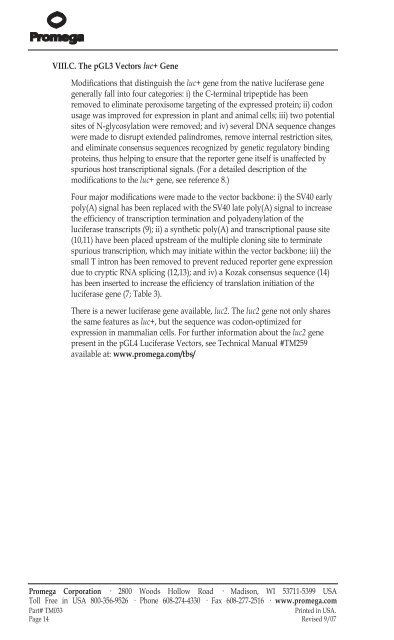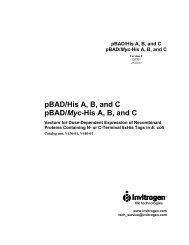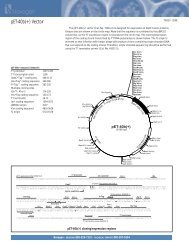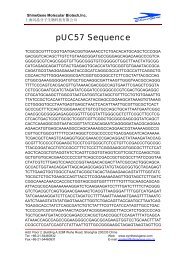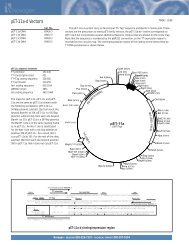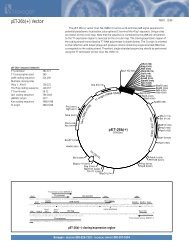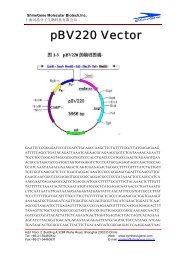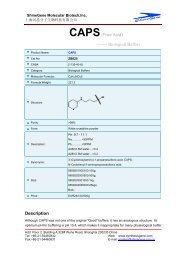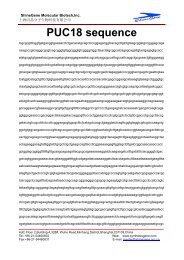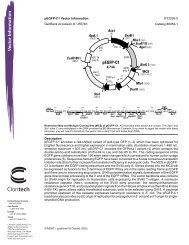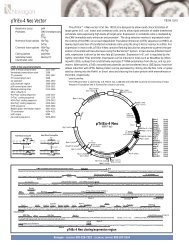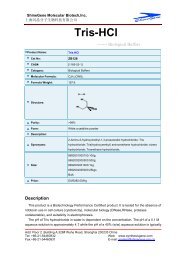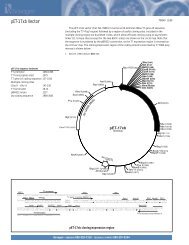pGL3 Luciferase Reporter Vectors Technical Manual #TM033
pGL3 Luciferase Reporter Vectors Technical Manual #TM033
pGL3 Luciferase Reporter Vectors Technical Manual #TM033
- No tags were found...
Create successful ePaper yourself
Turn your PDF publications into a flip-book with our unique Google optimized e-Paper software.
VIII.C. The <strong>pGL3</strong> <strong>Vectors</strong> luc+ GeneModifications that distinguish the luc+ gene from the native luciferase genegenerally fall into four categories: i) the C-terminal tripeptide has beenremoved to eliminate peroxisome targeting of the expressed protein; ii) codonusage was improved for expression in plant and animal cells; iii) two potentialsites of N-glycosylation were removed; and iv) several DNA sequence changeswere made to disrupt extended palindromes, remove internal restriction sites,and eliminate consensus sequences recognized by genetic regulatory bindingproteins, thus helping to ensure that the reporter gene itself is unaffected byspurious host transcriptional signals. (For a detailed description of themodifications to the luc+ gene, see reference 8.)Four major modifications were made to the vector backbone: i) the SV40 earlypoly(A) signal has been replaced with the SV40 late poly(A) signal to increasethe efficiency of transcription termination and polyadenylation of theluciferase transcripts (9); ii) a synthetic poly(A) and transcriptional pause site(10,11) have been placed upstream of the multiple cloning site to terminatespurious transcription, which may initiate within the vector backbone; iii) thesmall T intron has been removed to prevent reduced reporter gene expressiondue to cryptic RNA splicing (12,13); and iv) a Kozak consensus sequence (14)has been inserted to increase the efficiency of translation initiation of theluciferase gene (7; Table 3).There is a newer luciferase gene available, luc2. The luc2 gene not only sharesthe same features as luc+, but the sequence was codon-optimized forexpression in mammalian cells. For further information about the luc2 genepresent in the pGL4 <strong>Luciferase</strong> <strong>Vectors</strong>, see <strong>Technical</strong> <strong>Manual</strong> #TM259available at: www.promega.com/tbs/Promega Corporation · 2800 Woods Hollow Road · Madison, WI 53711-5399 USAToll Free in USA 800-356-9526 · Phone 608-274-4330 · Fax 608-277-2516 · www.promega.comPart# TM033Printed in USA.Page 14 Revised 9/07


